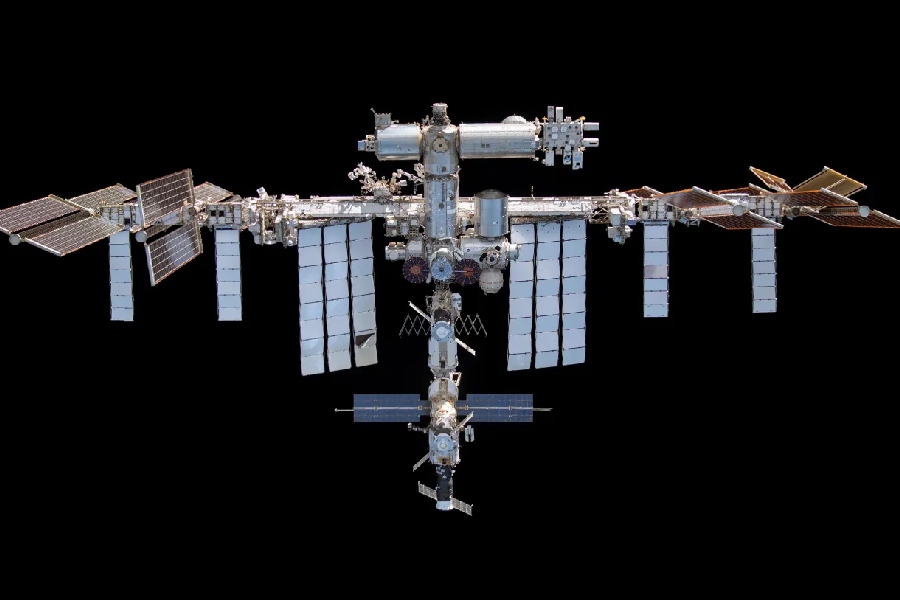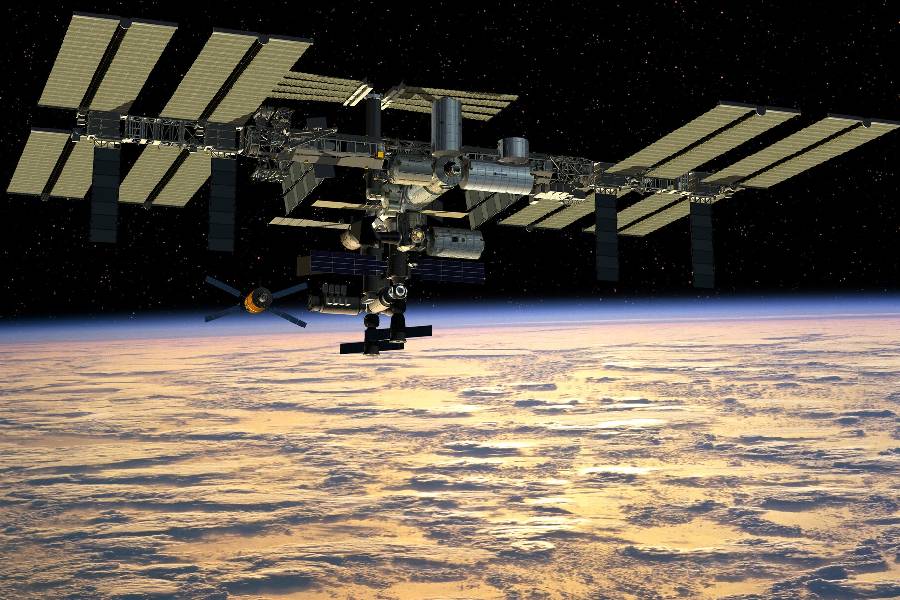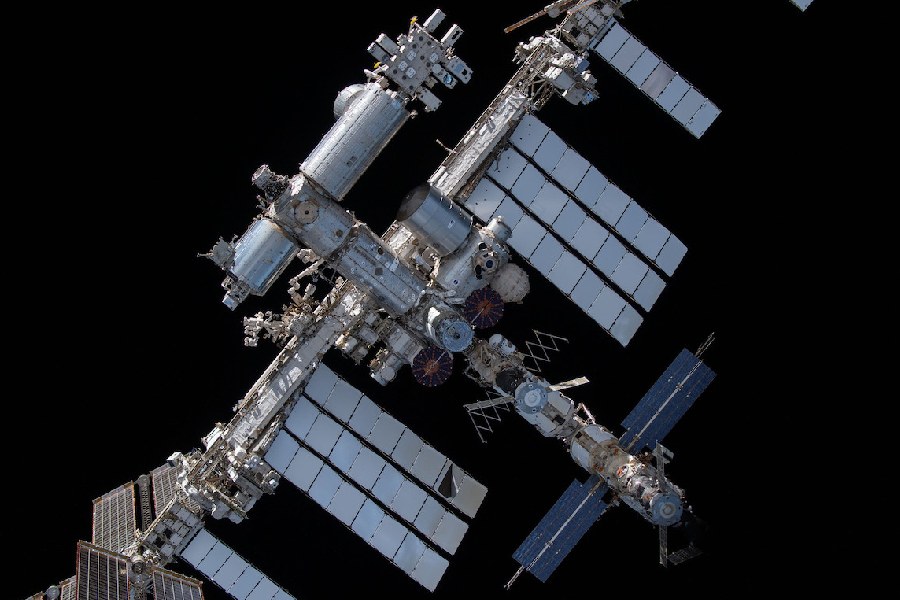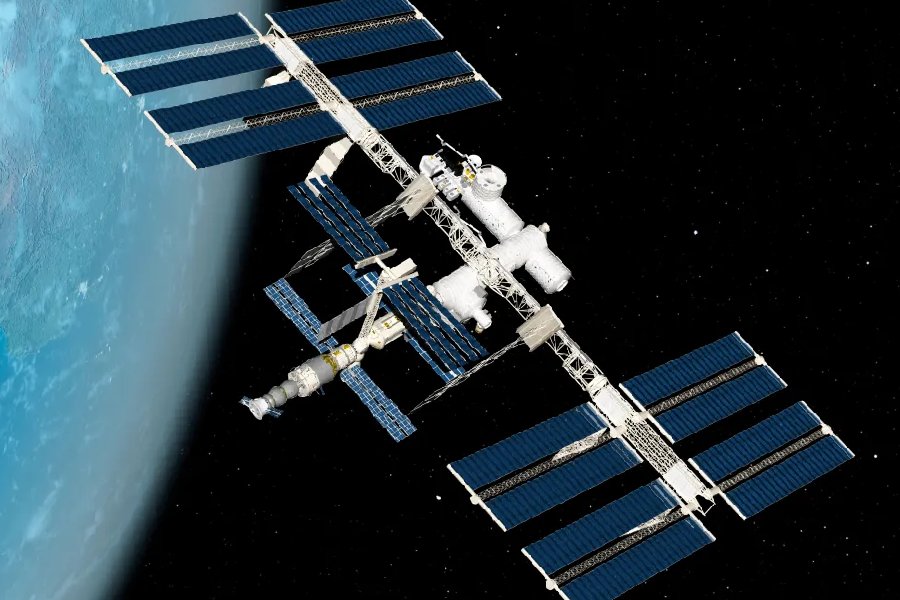Space stations have captured our imagination as orbital outposts hovering in low-Earth orbit high above Earth’s atmosphere. But what is a space station? What does a space station do?
In this guide, we’ll unpack a space station’s critical components, cutting-edge technologies, and incredible capabilities. You will understand key modules like living quarters, laboratories for microgravity science, robotic arms for maintenance, and docking ports receiving cargo vehicles.
We’ll also explore iconic stations past and present, from the early Soviet and American prototypes to culminating achievements like China’s Tiangong, the International Space Station and more on the horizon.
Let’s begin!

What Is a Space Station?
A space station is a large spacecraft with living quarters, laboratories, and workspaces. They are designed for humans to live and work in outer space for extended periods.
It also serves as a hub for scientific research, technological experiments, and international collaborations in the unique environment of microgravity. Orbiting Earth, space stations facilitate various activities, including scientific experiments, Earth observation, and testing technologies for future space exploration.
Notable examples include the International Space Station (ISS), a collaborative effort involving multiple countries, and past stations like Mir and Skylab. Space stations are crucial in advancing our understanding of space and fostering international cooperation in space exploration.
What Defines a Space Station?
A space station is distinguished as an advanced inhabited orbital outpost dedicated to space science research and exploration support functions. Critical traits include long-term human habitation capabilities exceeding orbital capsules and specialized laboratories conducting microgravity experiments and astronomy.
Additional ones include orbital docking, logistics support accommodating crew and supply vessels, and advanced life support systems that enable continuous time in orbit. There are purpose-span areas, including multidisciplinary scientific platforms in space, tech testing sites, and launch vehicle advancements.
Additionally, it involves spaceflight skill development and serves as an inspirational stepping stone toward goals like Moon bases and Mars missions. The expansive space goals encompass bases on the Moon and human missions to Mars.
Types of Space Stations
Overview of space station types
Different types of inhabited orbital outposts showcase specialized purposes or unique technical designs. In the early stages, stations were used to test concepts, gradually evolving to enhance capabilities in distinct phases. Modern modular designs involve launching components separately and assembling them in orbit to create expansive complexes.
Moreover, contemporary space stations have broadened their objectives, ranging from supporting space commercialization to aiding deep space exploration, such as serving as lunar gateway waypoints. Looking ahead, a new wave of space hotel projects is emerging to develop innovative tourism business models in space.
Modular space station
Modular construction marks a current leading space station format. This methodology launches station elements separately for rendezvous and connection on orbit into unified complexes.
Modularity principles allow for expanding stations’ capacities and roles by adding new laboratories, crew capacity modules, or amenities over time. It also supports component replacement after lifespan limits. The approach requires a common interface docking ability for new parts to integrate with the main structure.
Modularity also enables specialized fabrication and parallel work across global partner Space Agency contributors. The International Space Station exemplifies the modular technique’s advantages in building multifaceted orbital research platforms.

Benefits of a Space Station
Space stations confer numerous impactful benefits as advanced inhabited orbital facilities. Continuous microgravity research timeframes make studies and technology demonstrations impossible through brief satellite or capsule missions.
Scientific discovery
Stations allow testing space endurance limits, preparing for deeper space exploration like asteroid travels or Mars transit simulations. Their vantage point facilitates the Earth and astronomical observations. Global collaboration drives technological progress for participating nations.
Inspiration and preparation
Operational experience cultivates real-time problem-solving and spacecraft systems mastery. Also, symbolic inspiration toward futuristic space goals manifests through a drive to establish thriving human outposts in space. However, our steps beyond Earth begin by learning to live orbiting our planet first.
Living Spaces in Outer Space
Quarters and facilities
Inhabited space stations feature specialized living areas and facilities designed to support crews during extended stays away from Earth, often lasting for months. These stations incorporate sleeping quarters and fitness zones to facilitate personal care. At the same time, fully equipped galleys ensure dietary needs are met, even allowing for the cultivation of fresh foods in orbit.
For example, the Tranquility module aboard the International Space Station (ISS) has extensive life support machinery for cleaning the atmosphere and recycling liquids. The Cupola observation domes provide a serene space for Earth gazing. Hygiene compartments are equipped with zero-gravity showers and toilets utilizing air suction systems.
Moreover, these space stations are equipped with fire safety equipment to address safety concerns, and emergency personnel escape vehicles are strategically positioned to prepare for contingencies. This comprehensive integration of habitation resources allows for adaptability to various environments, ensuring sustained orbital missions with a focus on safety and sustenance.
Power and Resources in Outer Space
Operating in space demands both substantial power and vigilant conservation of limited resources. Massive solar panel wings are precisely aligned with the Sun, generating tens of kilowatts of electricity. And surpluses are stored in batteries during periods of shadow.
Furthermore, monitoring the consumption of vital resources such as oxygen and water enables adjustments in supply deliveries and recycling system functions. A meticulous approach to material handling ensures the reclamation of maximum resources, with only irredeemable waste being jettisoned.
Also, space stations attain a steady-state equilibrium by coordinating power sources with responsible resource use and recovery. This equilibrium is crucial for sustaining crews in orbit, where careful management of energy and resources becomes paramount for extended missions in the confines of space.

Launch and Assembly
Massive endeavors
Constructing space stations requires meticulous coordination, delivering components via specialized rockets and incrementally connecting them in orbit. Also, assembly missions demand precisely choreographed orbital rendezvous and spacewalking activities across global partners.
Furthermore, risks span aborted launches, damaged elements, connection failures, timeline delays, and compounding expenses. However, successful modular builds enable expansive orbiting complexes to exceed launch payload limits.
Specialized launch vehicles
Only certain rockets can heft the massive station elements with sufficient accuracy. These rockets are crucial for inserting them into precise orbits essential for later linking operations.
NASA’s Space Shuttle, Russian Proton and Soyuz rockets, the European Space Agency’s Ariane 5, and Japan’s H-II were all important heavy-lift vehicles for the International Space Station. Without these differentiated launch and orbit insertion capacities, assembling the ISS would have remained impossible.
Daily Life Operations
Typical day rhythms
Station crews follow highly structured routines that coordinate a diverse mix of activities. These include:
- Scientific experiments
- Station maintenance
- Exercise protocols
- Meal periods
- Task planning
Balancing professional and personal time
About 35% of the ultra-long schedule is dedicated to operating experiments, while 30% involves general station maintenance. The remaining 35% is split between exercise, personal free time, tasks like crew conferences with ground teams, and miscellaneous activities.
Rhythms must sync across 24 hourly zones imposed by rapid 90-minute orbital cycles around Earth. The regimented ebb and flow facilitates regular work/rest patterns for uninterrupted sleep and effective performance.
Critical care and upkeep
Vigilance over air, water and nutrient provisions persists using recycling systems and occasional resupply. Sanitation and exercise are priorities for mitigating microgravity health effects during months-long stays.
Operational upkeep handles minor repairs, yet major malfunctions pose severe risks requiring urgent attention. While intense, the regimens sustain safe orbital habitats.

Scientific Experiments and Research in Outer Space
Role in scientific endeavors
Space stations are pivotal in furthering science through stable microgravity research platforms. They facilitate external mountings, hosting probes and fixed or movable sensor packages.
Orbiting facilities enable studies averaged across weeks or months. These studies include astronomy, space physics, biosciences, materials development, and technology demonstrations. The longer research time frames are enabled instead of brief minutes during rocket launches or satellite passes.
So, dedicated station laboratory modules operate many concurrent experiments leveraging long-duration weightless conditions.
The elements of the International Space Station (ISS)
The International Space Station contains specialized pressurized modules and external trusses hosting science experiments. Core modules deliver crucial station functions like initial living quarters, life support systems, communications, electrical power distribution, and propulsion.
Laboratory hubs, including Columbus, Kibo, and Destiny, provide expansive experiment rack space across disciplines. Connecting nodes route resources between modules. Moreover, airlocks enable external maintenance of spacewalks. Massive solar panel wings generate electricity. Also, mobile servicing systems assist with robotic exterior activities.
Laboratory module for the ISS
The orbiting laboratory modules Columbus, Kibo, and Destiny facilitate most science investigations aboard the ISS. Their combined internal rack facilities provide the infrastructure to operate thousands of experiments.
This allows us to leverage long-duration microgravity plus views of the Earth and space. These experiments leverage long-duration microgravity plus views of Earth and space.
Research categories span physics, astronomy, medicine, biology, materials science, and demonstrating cutting-edge technologies. Using these dedicated pressurized science modules, station crews continually advance research benefiting life on our planet. Crews also enhance studies of places beyond the Earth.
Conclusion
Through this guide, we hope you have gained an expanded realization of how space stations push the frontiers of science and technology for space travelers. So, what is a space station?
Beyond being awe-inspiring symbols, space stations represent vital tools enabling discovery across experiments only possible surrounded by the microgravity and vacuum of orbit. The multifaceted functions, from laboratories to observational outposts, establish foundations in space supporting our expansion into the cosmos. These incredible orbiting structures showcase heights of human creativity rising among the stars.
